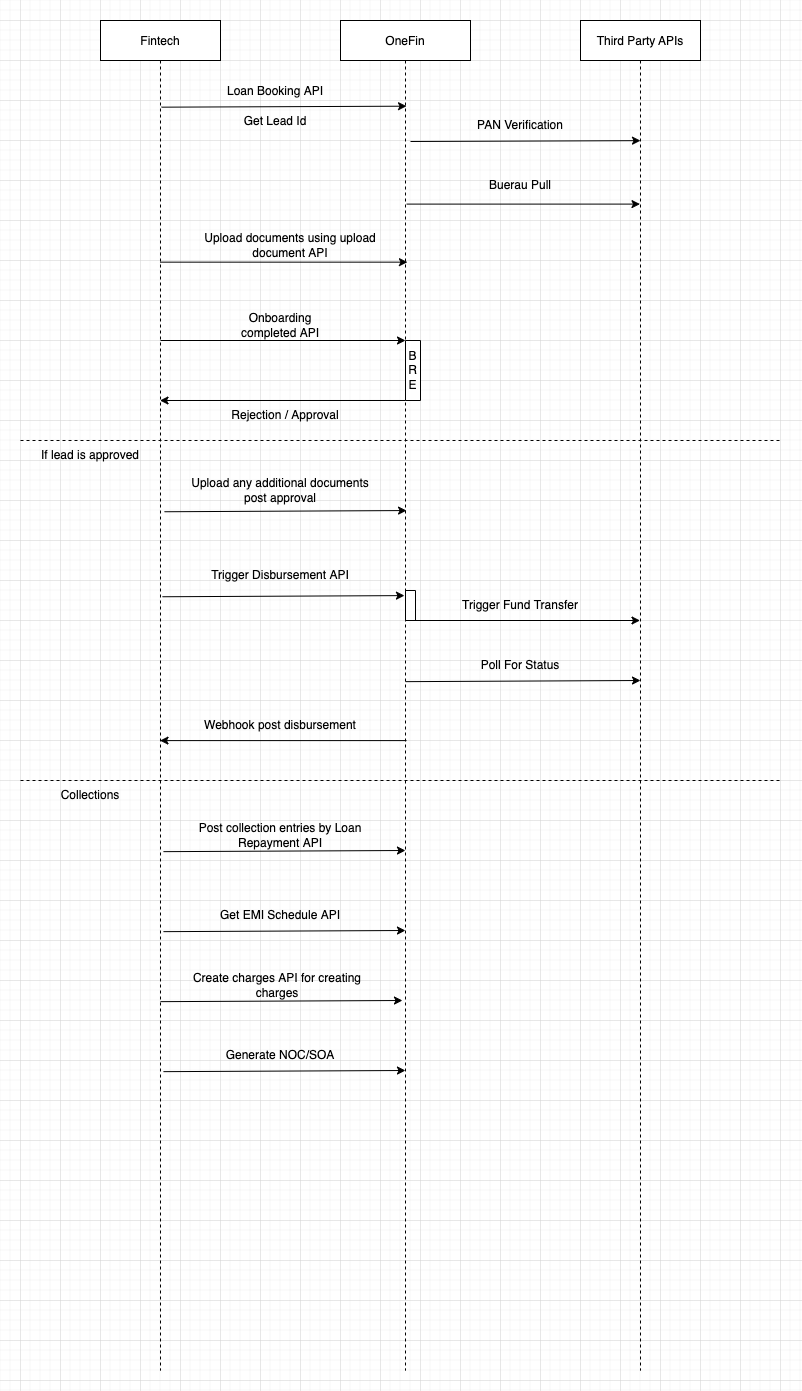Loan Booking APIs
Introduction
Loan Booking APIs allows any FinTech to send leads to their lending NBFCs. This is a detailed set of APIs which help the partner manage the entire loan lifecycle digitally and automatically.
It can also be used by anyone building a frontend application like an Android App or a website to store leads and perform various processes in the LOS and LMS dashboard provided by OneFin.
Go through the introduction!
If you haven't already, please go through the Introduction section which has some common conventions etc. for all OneFin APIs.
Concurrent API Requests | Attention Go Developers
Please do not call APIs for loans concurrently (this applies to both multiples APIs for the same lead & same API calls for multiple loans, it will lead to the server getting overwhelmed and would manifest as lots of timeouts / invalid updates etc. Please call all APIs sequentially to avoid such issues. This would help make a more robust integration.
Definitions
Fintech - the fintech partner that sources loans for a lender. The Fintech partner integrates these APIs in their flow. This document is mainly meant for their use.
Lender - the bank / NBFC in whose systems the loans are booked
Overview
These APIs allow the Fintech to book loans and mark repayments in Lender loan management systems.
- Loan booking API: This API enables Fintech to create the lead into the system.
- Upload Document API : This API enables Fintech to upload documents into the system.
- Disburse Loan API : This API enables Fintech to mark the loan as disbursed.
- Repayment API : This API enables Fintech to mark payments done.
- Charges API : This API enables Fintech to find charges.
A typical customer journey would be like below
- The customer applies for a loan on Fintech’s platform.
- Fintech approves the loan on their side, and only post-approval passes all details to Lender via the Loan booking API. This API would return a lead id and loan account no to the Fintech.
- In case any details (except mobile no of the customer) need to be updated by the Fintech via the Loan booking API, they can do the update before the Disburse loan API is called.
- The loan agreement signed by the customer along with other agreed-upon documents (e.g. KYC documents.) should be uploaded into Lender system via the Upload Document API.
- Once all details are frozen, and all required documents are uploaded, trigger disbursal process via the Disburse loan API. Fintech can get the status of the loan disbursal using the same API.
- When any payment is collected by Fintech, the Repayment API call should be made to reflect the same on Lender systems. Each payment’s breakdown must also be passed by the Fintech.
If you have any technical questions regarding these APIs, please contact us at [email protected]
Below is a sequence diagram of how the APIs are used in a typical flow. Note that the flows themselves are configurable, which can be discussed and configured.

API Sequence Diagram
